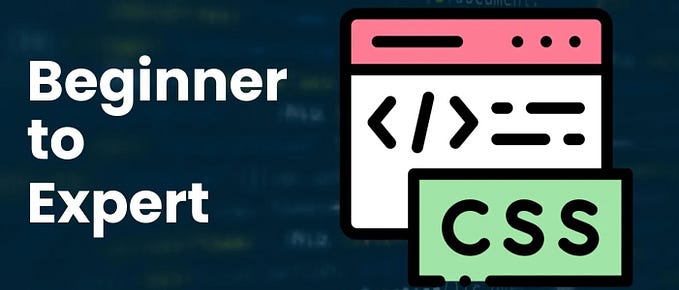Theory of Human-Computer Interaction
A crowd-sourced reading list
Face-to-face user studies had to be halted in the wake of Covid-19, and appear unlikely to resume any time soon. We are figuring out how to navigate this so-called ‘New Normal,’ exploring how Human-Computer Interaction (HCI) can contribute to the research effort and how our research practices can be adapted. Discussions about alternative means of assessing usability for artifacts contributions have started here and also there. The issue should maybe put differently: what if we took this as an opportunity to consolidate HCI theories?
Many of us however come to HCI from other fields — and have not necessarily received a proper introduction to HCI theories. I asked on Twitter and to my research colleagues at Sussex what were people’s favorite papers, chapters or books making theoretical contributions to HCI. Here’s a compiled list of reading suggestions I’ve received.
Introductions and overview
If you want a short and accessible overview, Ben du Boulay suggested this brief introduction to Human-Computer Interaction by John Carroll, editor of the 2003 HCI Models, Theories, and Frameworks: Toward a Multidisciplinary Science. Stuart Reeves noted Yvonne Rogers’ Theory of HCI (2012), while Dan Bennett recommended the book Computational Interaction (2018). The Interaction Design Foundation has many resources on HCI theory (for instance, this overview of Activity Theory).
About Users (Customers/People/Subjects/Participants)
Users is a contested term, but here are two suggestions about how they are defined and how this impacts our practices: Oudshoorn and Pinch’s book How Users Matter (published in 2003, recommended by Galo Cañizares); and Participatory design: principles and practices (published in 1993, edited by Schuler and Namioka and recommended by Nolwenn Maudet).
Empirical studies
Cognition
The 1987 book Understanding Computers and Cognition by Winograd and Flores (suggested by Dan Bennett). On situated cognition, a personal reference is Suchman’s 1987 book Plans and Situated Actions. She outlines the implications of ethnomethodology for HCI and calls for renewed attention to actions as they are conducted. The revised 2007 edition addresses critiques of the book, which we’re also discussing over here on Twitter.
On distributed cognition,
As companion readings, texts more focused on applications might be helpful. Ann Light recommended Design at Work: Cooperative Design of Computer Systems (edited by Greenbaum and Kyng, published in 1991). Ben du Boulay recommended Richard Mayer’s Cognitive Theory of Multimedia Learning, initially published in 2005.
Activity Theory
Activity Theory is arguably one of the most influential theory of HCI. It is used for:
1) analysing unique features, principles,and problematic aspects of the theory; (2) identifying domain-specific requirements for new theoretical tools;
(3) developing new conceptual accounts of issues in the field of HCI;
(4) guiding and supporting empirical analyses of HCI phenomena; and
(5) providing new design illustrations, claims, and guidelines
Clemmensen, Kaptelinin and Nardi
To understand how it relates to situated action models and distributed cognition frameworks outlined above, try Bonnie Nardi’s Studying Context: A Comparison of Activity Theory, Situated Action Models, and Distributed Cognition. On activity theory itself, a personal favorite is Susanne Bødker’s Through the Interface — a Human Activity Approach to User Interface Design (the dissertation in 1987, the book in 1990). Her paper When Second Wave HCI Meets Third Wave Challenges is a great read before the papers about experiences below.
Affordances
To tie activity theory and an introduction to affordances, try this 2002 paper by Klaus B. Bærentsen and Johan Trettvik, An activity theory approach to affordance recommended by Henrik Korsgaard. The 2017 paper Organizational Affordances: A Structuration Theory Approach to Affordances Affordances by Vyas et al. makes for a nice parallel reading. If you’re curious about earlier texts on affordances, there’s Don Norman’s 1988 The Design of Everyday Things — recommended by Victor Mateevitsi.
Interaction
What do we mean by interaction? Hornbaek & Oulasvirta argue that
“the term interaction is field-defining, yet surprisingly confused [covering concepts such as] viewing interaction as dialogue, transmission, optimal behavior, embodiment, and tool use [which] constru[es] the causal relationships between the human and the computer.” They emphasize “the need to improve scope and specificity, to better account for the effects and agency that computers have in interaction” in their 2017 paper What is Interaction.
To prolong this discussion, read this 2019 paper by Stuart Reeves and Jordan Beck next: Talking about Interaction*.
Experiences
I’m not sure ‘experiences’ is the best umbrella term for these two texts, but this is the best I got. Brenda Laurel explains why “there is more to the experience than getting something done in the real world” and how to go beyond this task-based approach in Computers as Theatre (initially published in 1991, re-edited in 2013, recommended by Dooley Murphy). This is quite a different proposition than, for instance Norman’s description of computers as invisible interfaces between one and one’s task.
Mekler and Hornbaek take stock of attempts in HCI to consider subjective and pleasurable experiences. They articulate in their 2016 how this recovers two different types of experiences: Momentary Pleasure or Lasting Meaning?: Distinguishing Eudaimonic and Hedonic User Experiences.
HCI and Games
Do tell me which texts should be referenced here, in comments or on Twitter.






